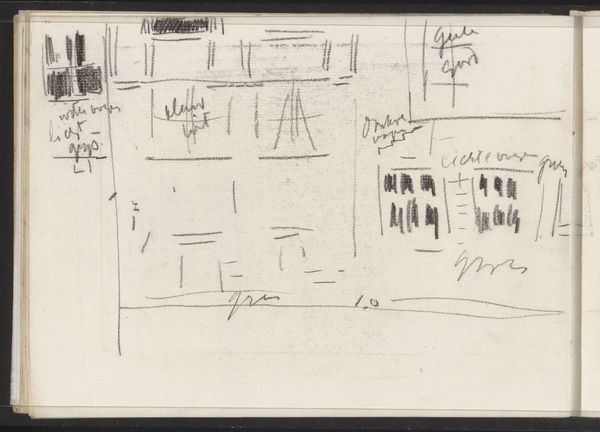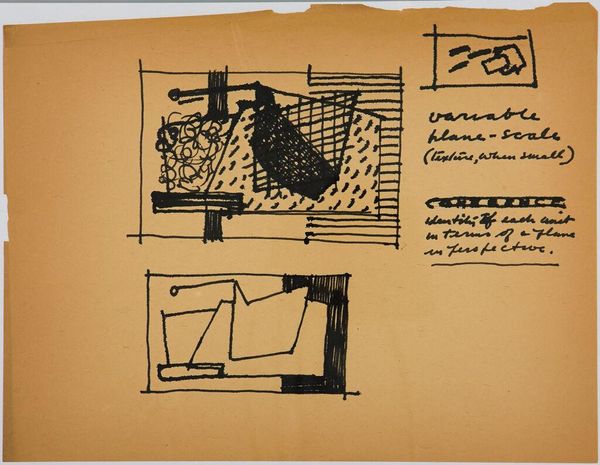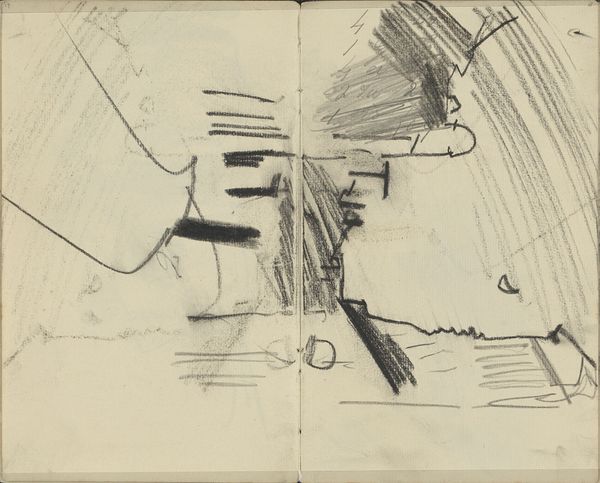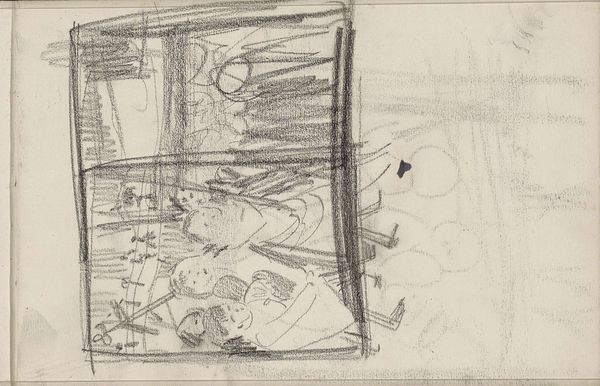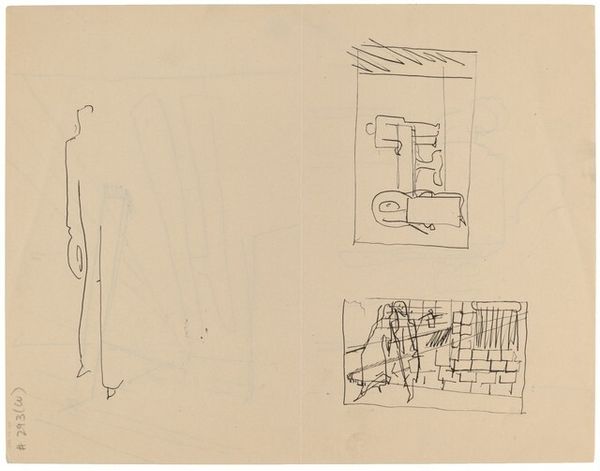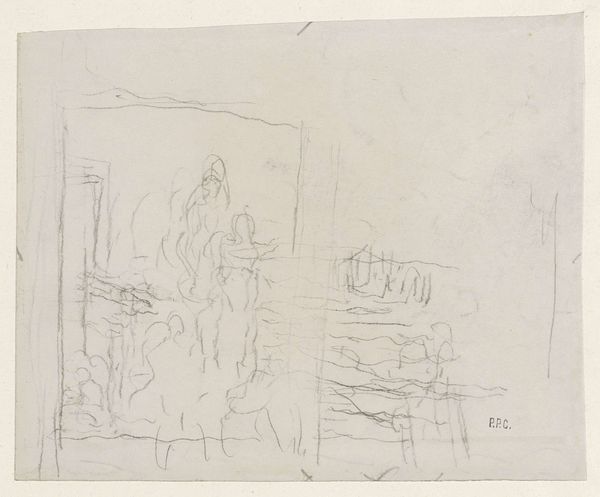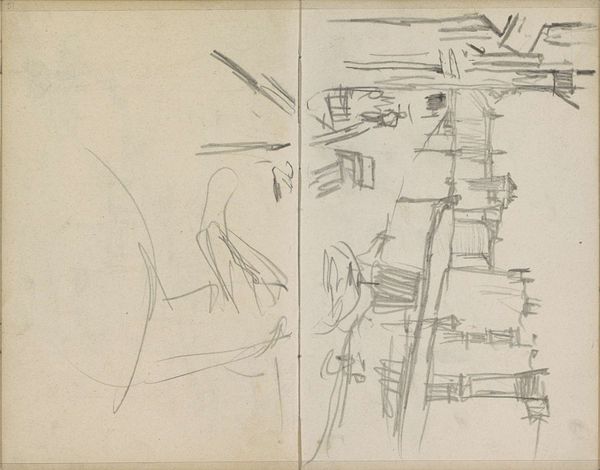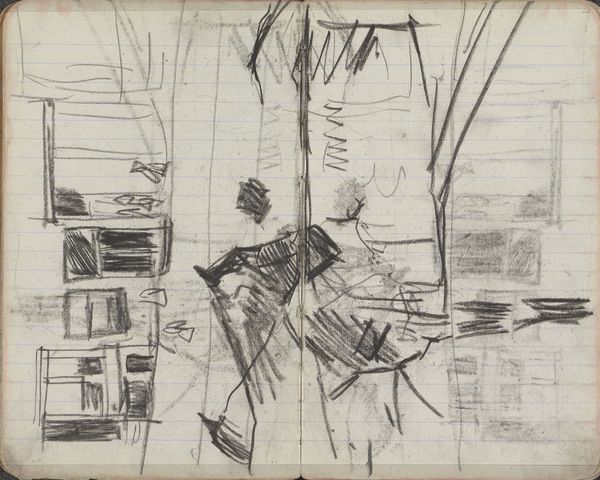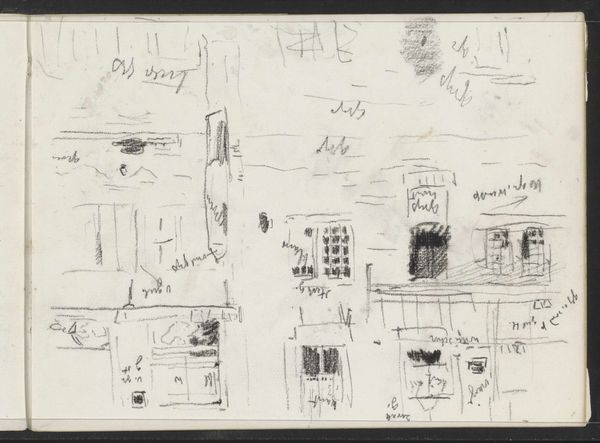
photography, gelatin-silver-print
#
street-photography
#
photography
#
historical photography
#
gelatin-silver-print
#
cityscape
#
modernism
#
realism
Dimensions: overall: 20.3 x 25.3 cm (8 x 9 15/16 in.)
Copyright: National Gallery of Art: CC0 1.0
Curator: Here we have Robert Frank's gelatin-silver print, "Pablo--Early New York City 1," created in 1951. What strikes you first? Editor: The immediate impression is a kind of chaotic energy, yet contained. It's a contact sheet, so we’re not looking at a finished photograph but at the raw material of the artistic process itself. It’s fractured, segmented… a pre-constructed narrative puzzle, almost. Curator: Exactly! The choice of the contact sheet format is fascinating. Formally, the rigid grid structure contrasts vividly with the captured moments within each frame. The stark black bars accentuate the individual narratives, compartmentalizing experience. We can think of each image as a discrete semiotic unit. Editor: Indeed. Viewing this from a historical perspective, the contact sheet challenges the notion of the decisive moment. It implies that meaning isn't solely in a single image, but in the selection, the editing, the context that shapes the image. Think of Frank's work pushing back against established photographic norms of the time. Curator: Notice the recurring motifs: faces in repose, stark sunlight and shadow, slices of urban fabric. The interplay of light is not just documentary but expressive; the tonality of the gelatin silver emphasizes depth. Editor: The city itself becomes a character. What seems important here is not only how people move around, but their relationship with spaces they happen to occupy or cross paths inside and between each other during the timeframe presented in the contact sheet itself. We see elements that depict a certain segment of the population, some architectural references that tell of the socio-economic strata, and glimpses that provide a window to the culture in the first half of the 1950s in a big metropolis. Curator: This work forces a meditation on contingency and choice. How the artist refines, organizes, and gives rhythm through these photographic beats. Editor: Precisely, Robert Frank gifts us an insight into his creative method—an indexical record that offers the urban symphony as an assemblage of visual incidents rather than a single, neat portrait. The city, thus presented, is forever unfurling. Curator: A complex testament. Editor: A true slice of time.
Comments
No comments
Be the first to comment and join the conversation on the ultimate creative platform.
